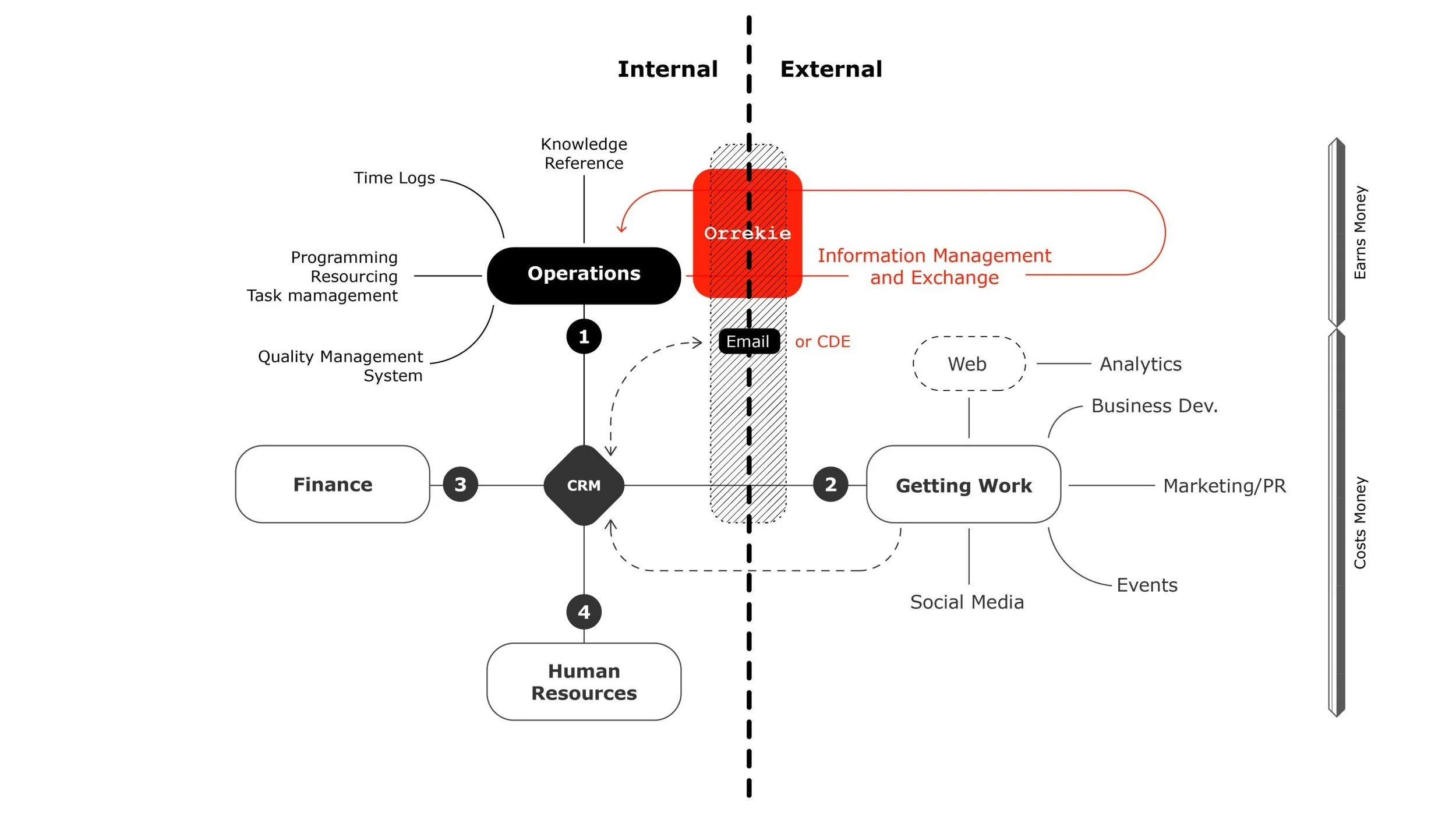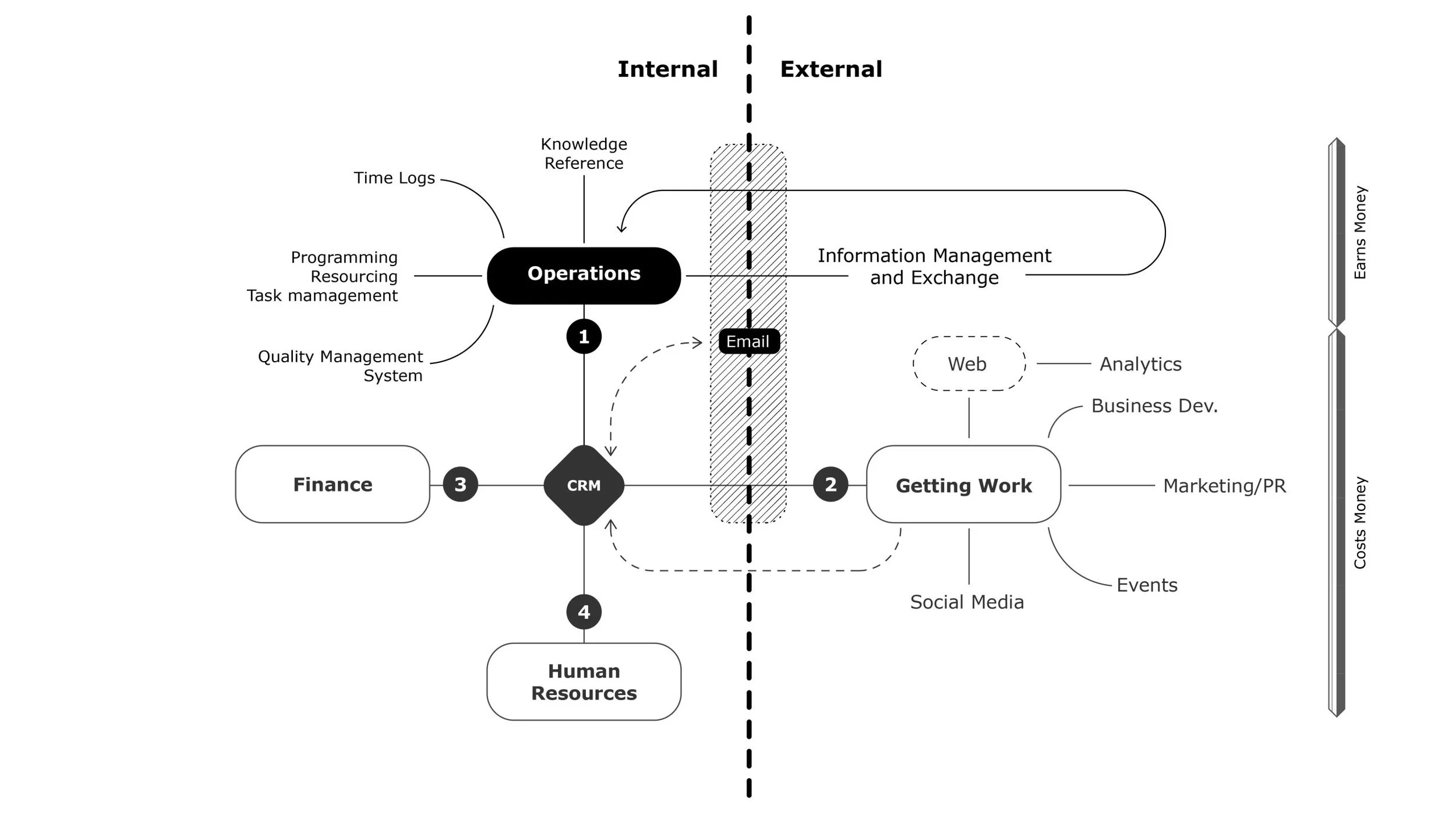AEC Software Stack
Introduction
In the fast-paced industry of Architecture, Engineering, and Construction (AEC), it is critical to have a solid software stack that can automate tasks, streamline workflows, prioritise tasks, and track progress. This not only facilitates organised and reliable information, but also frees up more time for creative and innovative work. In his book “Getting Things Done: The Art of Stress-Free Productivity,” David Allen emphasises the importance of being organised and prioritising tasks to reduce stress and increase time spent doing what matters most. Likewise, the proper software stack for an AEC company is fundamental to helping professionals increase productivity, maximising time spent on what is enjoyable and profitable, as well as ensuring financial and organisational viability in the long run.
In this post we delve into what we think makes an AEC company really work and why we think the Orrekie platform can be an important part of your daily routine. For us, getting information out to your design, client and construction teams in a trackable, automated, and streamlined way creates a purposeful sense of progress in a project and we aim to provide the information and tools to do just that.
Elements of an AEC software Stack
Financial
An accounting package like Xero, Quickbooks or Freshbooks
Marketing, Public Relations and Business Development
A contact database (Customer Relationship Management system or CRM), such as Hubspot CRM, Zoho, Monday, or Salesforce.
A website with an easy to use website content management system e.g. wordpress with Elementor, CraftCMS, etc. And a visitor identifier such as Dealfront (Leadfeeder) or Google Analytics.
An automated email marketing software such as Salesforce, Hubspot, Mailchimp or Active Campaign.
Key social media accounts (LinkedIn, Facebook, Instagram, Twitter, Pinterest, YouTube, Tiktok etc.) And possibly a social media management app such as Sprout Social or Hootsuite.
Operations
Time recording (e.g. Harvest, Celoxis, Monday, Zoho Projects)
Design programmes and Task Management (e.g. Celoxis, Monday or Zoho Projects)
Information Management (normally via an email and/or a Common Data Environment [CDE])
A knowledge centre (such as Gitbook or Notion)
A quality system (e.g. the UK’s Royal Institute of Architects’ (RIBA) Chartered Practice Quality Management System (QMS))
An email client (Apple Mail, office 365 etc.)
Human Resources
A human resources management system e.g. Bamboo HR etc., which looks after on-boarding, staff management and support and off-boarding.
Conventional AEC Software StackPrinciples of a Software Stack
The world is complex digitally, and experience shows that one size definitely does not fit all, and one vendor cannot provide all the functions a modern business needs; however, all successful digital platforms share some common attributes:
Availability
Cloud based software: easily available, at all times, and accessible from any location.
Data only in one place
Don’t keep the same data in different places (but, see below regarding security). One client of ours had their customer and colleague contact information in 4 different places – an excel sheet on their in-house server, in an email invitation system for parties/events, in Hubspot CRM so that staff members could access contact information day-to-day, and lastly in Mailchimp for email marketing. Not surprisingly much time was spent keeping data up to date across all four out-of-sync silos, and often data were simply wrong. The benefit of a central, always available, always being updated data source for the whole team to use cannot be overstated.
Security – use of air gaps between data
Some data however should not be easy to access and we have seen security conscious organisations air gap financial and personnel data, deliberately not connecting these to CRM systems to avoid inadvertent data breaches or contamination.
Cost
Watch costs, they can creep up on you, the “freemium” model–enticing you with initial free access and then hitting you with quickly escalating costs for premium features and access–one to be aware of.
Complexity / Clarity
The software stack will be complex, but keeping a clear diagram front and centre helps build it out, as organisations grow and change, and, as the world develops digitally, situations change and new solutions will become available and apparent.
Ease of Use and Connectivity
Make sure it is easy for humans to use, if software requires onerous, complex, and overly technical workflows then they will not get used; in addition, key elements of the stack should be connected with one another with data syncing back and forth. Which brings us to automation….
Automation
This is only now starting to gain traction in Small and Medium Enterprises (SMEs) and even larger companies have not fully recognised its potential. For instance, you can link your personal outlook address book to your central CRM and sync both ways, no double data entry and you benefit from a colleague who updates contact details that you then use. Likewise, email marketing automation tracks the campaign success rate, who opens what when and who unsubscribes. However, the AEC industry still lacks key elements being automated across daily operational workflows.
The Missing Link? Information Management
Much has been written about the more popular areas of a software stack but Orrekie focusses on information management and specifically how it applies to managing projects within an organisation.
In most AEC software stacks, this crucial central task is either not served or badly served.
AEC Software Stack with Orrekie as vehicle of information exchnageOrrekie helps by providing a cloud based, fully accessible database to issue information, track its progress, record how it has been cleared and provide an organisation with full access to and insight into their projects. Email becomes a carrier, rather than the message itself; indeed, the Orrekie system is agnostic about the carrier and is equally at home with direct submission to a Common Data Environment (CDE) or sent by email, or other delivery method.
Conclusion
A solid software stack for your AEC company is critical for increased productivity, financial viability, and organisational success. It is important to ensure that your software stack is cloud-based, has data in only one place, is secure, and is cost-effective.
It should be easy to use, and key elements of the stack should be connected with one another with two-way data syncing. Automation is also critical and under-used in the daily workflows of the AEC industry, and missing key elements like information management can be crucial for the success of your projects. Orrekie can help fill the gap by providing a cloud-based, accessible database that can streamline your project management workflows. To learn more about Orrekie and how it can enhance your AEC software stack, pleaze follow us, and sign up for our newsletter.


